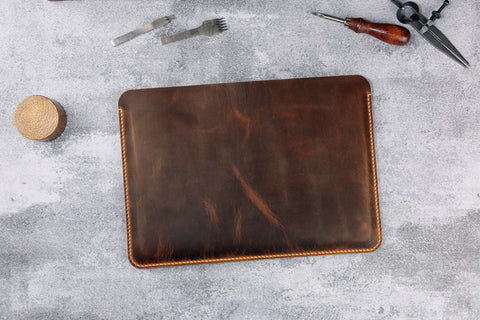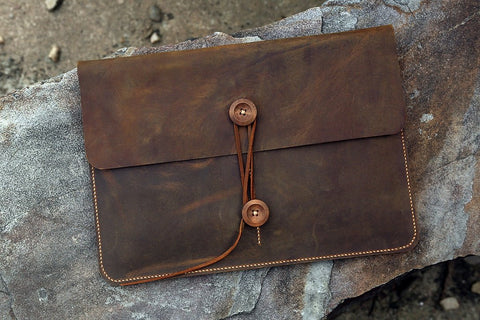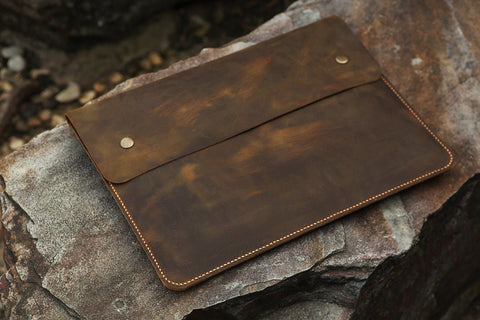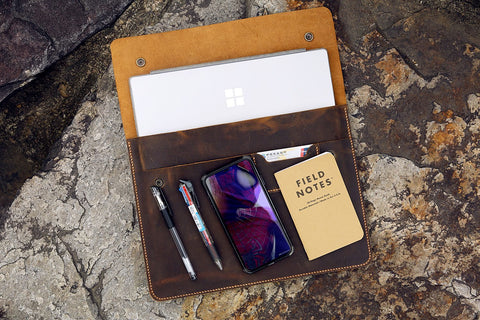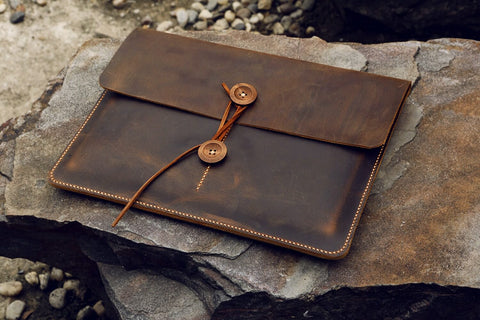How to dye leather
Introduction
"Dive into the Art of Leather Dyeing: A Guide to Unique Techniques and Vibrant Creations"
Leather dyeing is an ancient craft that transforms the simple beauty of leather into a canvas of endless possibilities. This guide delves into the sophisticated world of leather dyeing, exploring innovative methods that range from traditional wax printing to the intricate marble paste dyeing technique. Whether you're a seasoned leather craftsman or a curious beginner, our comprehensive overview of basic dyeing methods for leather carving, tie dyeing with natural agents, and the cutting-edge anti dye dyeing method will inspire your next project. Discover how to bring imagined patterns to life and create original works of art with our step-by-step guide to dyeing leather. Unleash your creativity and elevate your leather crafting skills to new heights with these unique dyeing techniques.
Dyeing refers to the use of dyes to color the surface of leather. Common leather dyeing methods include oil dyeing, paste dyeing, anti dyeing, crystal dyeing, dry wiping, wax dyeing, etc. Dyeing agents are divided into oily paste dyes and water-based dyes. Oil based paste dyes are the best finishing dyes for creating shadows and highlighting three-dimensional effects when used in printing or carving; Water based dyes usually exhibit bright colors and cannot be wiped off once applied. One important task in dyeing is anti dyeing. In contrast to dyeing, anti dyeing prevents leather dyes from coloring the leather surface. In leather dyeing, countless colors can be created by combining basic colors and mixing them, concretizing imagined patterns and creating original patterns.
Basic dyeing methods for leather carving
First, pour the water-based dye into a small plate, and use a small brush to carefully apply the dye to the area pressed down in the middle of the pattern; After drying, use cotton cloth dipped with leather bright lotion to coat the leather for anti staining treatment; Use a toothbrush to apply the oily dye onto the anti dye leather; Finally, use a clean cotton cloth to wipe off the oily dye.

Small brush dyeing

Anti-dyeing treatment

Finished dyed leather
After the pattern carving and dyeing are completed, it is necessary to confirm that the leather surface is clean and free of dust or other particles. Then, use leather gloss oil, cowhide oil, or similar preparations that can maintain leather quality and protect the leather surface. Gently wipe the leather surface in a circular pattern to enhance its durability and glossiness. When applying glossy oil, remember not to wipe it repeatedly.
Wax printing
This is a well-known dyeing method for fabrics, and it is also one of the dyeing methods that can be used on leather. Melted wax is placed on the leather to achieve the purpose of anti dyeing. It can even create cracked patterns to give the work a sense of gap and have obvious characteristics. According to personal preferences, the size, thickness, and mixed patterns of turtle cracks can be controlled (Figure 1-72). Reasonably use the cracked and dense patterns to form a dense relationship with the main object in the leather surface, making the entire leather surface appear rhythmic and layered.

Cracked leather
Tie dyeing
Similar to the well-known tie dyeing technique, the required leather is slightly thinner natural vegetable tanned leather, and the dyeing agent can also be changed from chemical dyeing agent to plant dyeing agent, such as indigo root, gardenia shell, etc., and can even be prepared by oneself. Tomatoes, purple cabbage, tea water, etc. can all be used as dyes. The tie dyeing case is shown in Figures.

Tie-dyed leather products
Slice staining
The concept of slice dyeing and wax dyeing is the same, both of which are achieved by sticking slices on parts that do not require coloring to prevent staining. Although it does not have the effect of cracking patterns, it can undergo anti dyeing treatment that perfectly matches the shape because it can be freely cut. Among them, slice dyeing can utilize the differences in slice size and shape to overlap colors, resulting in a magical color changing effect (Figure 1-74 to Figure 1-87).

Dye the leather with the first layer of color and air dry for about 30min

Attach the slice and apply a second color of dye to the leather so that the colors overlap

The dye is applied in the same way as the first color, moving from the edge of one side to the other

After the second color is applied, air dry for about 30min to move on to the next step

Anti-staining with slices before repeating coloring

The dye can't penetrate over the slice, so just follow the usual application method

The small parts should also be recolored so that the color is uniform

Peel off the slices and do not allow the slices to remain on the leather

The final staining is complete
Anti dye dyeing
The unique coloring method for anti dyeing is that the anti dyeing agent will turn into a rubber like film after drying, which can be easily peeled off. If the anti dye is directly applied to the natural skin, the area peeled off from the anti dye film will show the natural skin color, so if other colors are applied, that part will become the color applied. By utilizing the film-forming and waterproof properties of anti dye agents, designers can create a variety of effects (Figure 1-88 to 1-94).

Prepare leather, brushes, anti-dye, and paper cups

Use a brush to dip the anti-dye agent

Use a small brush to draw a pattern on the leather

Dry the dye depiction depiction

Once completely dry, prepare for staining

Use a clean brush dipped in dye and apply it evenly to the leather surface

After the dye is dry, you can use a wet cotton pad to gently wipe the leather surface to complete the dyeing
The anti dye used here requires a colloidal liquid anti dye, and there are no restrictions on the tools used for applying anti dye. Corrugated paper, sponge, yarn mesh, brush, etc. can be selected according to needs. Anti dyeing agents can also be used to achieve multi-level anti dyeing and color overlap, with the characteristic that patterns and patterns made using various tools around can coexist. The anti dyeing effect varies depending on the author's creative ideas .

Anti-dyeing effect
Marble paste dyeing method
The required tools include marble paste dyeing powder, flat tray, sketching paste dyeing wooden stick or iron pen, cling film, and liquid dye. The specific steps are shown in Figures 1-96 to 1-101, and the paste dyeing effect is shown in Figures.

Prepare the dye solution

Pour the paste dye into a flat dish

Drop in liquid dyes

Sketch

Leather dyeing

Post-treatment of leather surface coloring

Demonstration of paste dyeing effect
① Mix the paste dyeing powder and water in a ratio of 1:18, stir every 1-2 hours, at least 3 times, until the paste dyeing powder is completely dissolved, and let it stand for more than 12 hours.
② Slowly pour the mixed paste dye into a flat plate and puncture the bubbles, otherwise you will see small white dots after dyeing. Before pouring in the paste dye, you can lay a preservation bag on a flat tray or other flat items to isolate the paste dye.
③ Then add liquid dye and it is recommended to use a dropper to absorb the color, which can accurately drop to the desired location.
④ Start sketching with an iron pen, wooden stick, or handy tool.
⑤ After drawing the desired pattern, gently cover the prepared leather without moving it. Gently press with your fingers to ensure that all colors adhere to the leather surface. After standing for 10 minutes, slowly peel off the entire dyed leather from one direction and lay it flat on the mat.
⑥ Scrape off the excess base material on the leather surface with a scraper, then clean it with water, use a dry towel to absorb water and press it dry, air dry it, apply oil and brightening agent, and obtain a paste dyed leather surface.
Cauterization
The technique of using high temperature to burn patterns can also be used on leather materials. A professional burning pen comes with a variety of pen tips that can be replaced to meet various linear requirements. However, the texture of the pen tip is hard, and the lines drawn are slightly more rigid and stiff than those drawn with brushes, pencils, etc. The pen method is similar to how we draw and write, allowing us to freely depict the desired pattern, and can also be used in conjunction with coloring techniques.




